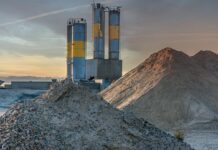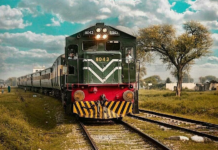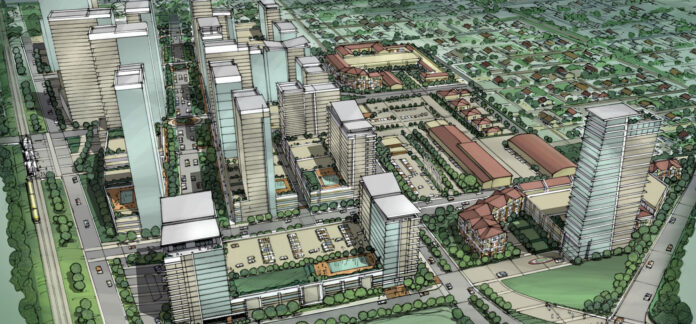In August 1947, a single propeller plane landed on a thin airstrip in an aerodrome in Lahore’s Walton Airport. On board the plane was Muhammad Ali Jinnah, already known by then as Quaid e Azam. This was not Jinnah’s first visit to Lahore, in fact, it was not even his most monumental. It had been in this very city that the first stone of the Pakistani nation state was laid by Jinnah and his Muslim League in the ‘Lahore resolution’ of 1940. But the landing of that plane in 1947 was significant for another reason – it was the first time Jinnah was going to step into Lahore since the partition of the subcontinent.
The moment must have been a poignant one. Lahore was one of the many cities that could have gone to either India or Pakistan. Some would argue that the city went to Pakistan because of its greater Muslim population and its status as a former Capital of the Mughal Empire. The reality was less thought out. Lahore was becoming a part of Pakistan simply because of the line drawn by Sir Cyril Radcliff across the Indian subcontinent. For better or for worse, once that line was drawn, all of Lahore – its people, its culture, its economic and social future – were all tied with the state of Pakistan.
The Lahore Mr Jinnah landed in was starkly different from the one we have in front of us today. For starters, Walton Airport at that time was practically in the middle of nowhere and surrounded mostly by flatlands and grass fields. Today, it is barely a kilometre away from the hustle and bustle of what is considered the ‘center point’ of Lahore. Back then, it was the only airport in Lahore and had been founded by a group of philanthropist aviators in 1930. Today, it is in the process of being ripped down and replaced by high-rise commercial and residential buildings.
Don’t believe us? Just take one look at the Lahore Central Business Districts Development Authority’s (LCBDDA) ‘Lahore Prime’ project – a mega high-rise development project with favourable by-laws backed completely by the Punjab government. Essentially, the Punjab government wants to knock down the Walton Airport and hand it over to real estate developers to make both commercial and residential high-rise real estate in one of the most central locations in the city. On the 5th of August, an auction will take place for plots in this area where private developers can make a bid to get their land and begin building their high-rise buildings. And it isn’t just this one airport – the government also has its sights on Wahdat Colony and Railways Colony. These projects and others like them tell us one thing and one thing alone: Lahore has come face to face with its vertical reckoning, and the Punjab government is all chips in.

There are, however, a few hiccups. For starters, why exactly is it that the government is now stepping in and deciding they want in on high-rise mega projects, and what are the areas they are selecting to undertake these projects on. More importantly than that is the question of whether Lahoris will bite and make this successful. The final question is a more theoretical one – if this gambit by the Punjab government is successful, what does it mean for the rest of Pakistan? And more specifically, considering they are trying their level best to turn Lahore into a feasible ‘central business district,’ what does it mean for Pakistan’s current financial capital, Karachi?
Taking to the skies – why we need high-rise culture
The transition of the Walton Airport from airport to business district is one that has its opponents. For one there are the aviation enthusiasts that will be losing their flying club. Then there are the heritage geeks that will bemoan the loss of a well hidden relic of colonial times. And while it is not the place of Profit to judge whether heritage is more important than business, we must urge these detractors to look closely and realise that the transition is actually a very natural one.
Our story begins in 1930, by which time the first airplane had been invented nearly three decades ago and after a lot of trial and error humankind had successfully taken to the skies, and the phenomena of air travel was quickly becoming representative of the ‘new age.’ In 1930, when a group of aviation enthusiasts acquired 157.87 acres of land from the Forest Department, and cleared trees from the forestland to construct a green airfield from where they started their flight operations. The green airfield was eventually replaced by a concrete runway which was used both in the second world war for combat planes, and for commercial flights up until 1960 – when the Allama Iqbal Airport was constructed in Lahore. From then on, the Walton Airport would be used as a training ground for commercial pilots and the Lahore Flying Club.
But air travel is old news now, and Lahore is once again taking to the skies, albeit in a different manner. Because when we say Lahore is taking to the skies, we mean it is finally beginning to expand vertically in the shape of high rise buildings. For the longest time, vertical expansion has been something Lahoris have avoided like the plague.
Somehow, the character of the city has been such that it has resisted the allure of apartment living and saving on space. Karachi is still the largest city in Pakistan, but by some measures, the greater Lahore metropolitan area may now be almost equal in size, if not already somewhat larger. Yet for most of its history, Lahore’s residents have shunned the notion of vertical expansion of their city’s size. Lahore has expanded horizontally with housing societies cropping up in areas far flung from the city center. But things are changing for Lahore. In recent years, there seems to be more willingness among people not just to live in apartment buildings in Lahore, but also among investors to want to put money into high rise apartment buildings for residence, as well as megastructures meant for commercial purposes. And we are not just talking malls when we say high rise commercial buildings – we mean office buildings and business parks as well.
Why is this so? The answer is very simple: Pakistan desperately needs thriving urban centers. Cities, after all, have an important role to play in the economic fortunes of the people that live in them. Pakistan’s urban population is currently 37% of the entire population, but it contributes a massive 60% to the national GDP. While those in the rural areas producing agricultural products are doing massively important work in terms of providing food security and producing actual products, there are so many in major cities in the service sector that are contributing to the economy. However, if they are to continue doing this effectively, they need to have comfortable living conditions, healthcare facilities, as well as recreational facilities. Similarly, for those people that want to set up businesses that will employ the people that want to work in the services sector, then they will need places to conduct their business, offices, and centers with friendly by-laws. That is essentially what the Punjab government wants to build with its ideas for central business districts.
“We need to give comfortable spaces to the urban population to work in. If we are to foster economic growth and activity, then we must encourage it. We need to provide a suitable ecosystem, and infrastructure to support people doing business,” says Imran Amin, CEO of the LCBDDA. “Our goal is to make Lahore a commercial economic city. The CBD in Lahore will definitely play a vital role in economic growth with attracting people seeking business and job opportunities. We do not want to limit ourselves to just providing office buildings and being done with it – a central business district in my conception provides exceptional business openings as well as offers effective working, living and playing spaces through quality urban design.”

The entire concept here that Imran Amin continuously repeats and reiterates in the course of our interview is that of urban regeneration. This is the attempt to reverse that decline by both improving the physical structure, and, more importantly and elusively, the economy of those areas. In all regeneration programmes, public money is used as an attempt to pump prime private investment into an area.
What they plan to do
As has been mentioned in the previous section, the key term here is urban regeneration. The term was used previously in a 2001 article by The Guardian which mentioned how “the collapse of “Britain’s industrial and manufacturing economy has left many inner city areas blighted by unemployment, riddled with poor housing and socially excluded from more prosperous districts.” There is a key difference between the example that The Guardian discussed in its article and Pakistan today – and that is that Pakistan has never really had an industrial and manufacturing economy for it to collapse in the first place.
And while this is not an exact fit, Pakistan does face many of the same issues and the solution may lie somewhere in this idea. Now, the entire concept of urban regeneration is that if the government pumps money into an area it will result in private investment eventually coming into the area. The only issue is, where will the money come from?
That one is a little simpler – nowhere. The government does not have the money to spare for such uplift projects apparently, but what it does have is land and lots of it. So in a city like Lahore, the government finds land that it owns, such as the Walton Airport, which is not being used and hands it over to private developers. The developers then decide on their own how much of the land they want to build on commercially and how much of it they want to build on residentially. The government hands over their land on a 99 year lease to the developers to do as they please but with the agreement that they will only use the land to develop high rise commercial and residential buildings. These buildings in these business districts will then encourage economic growth and activity.
“One of the main reasons for setting up the LCBDDA was that the federal and provincial governments believed that the government had enough land in most major cities and different areas that was never used, that if it were, it could be utilized from the point of view of urban regeneration,” explains Amin. “We are an authorised body and our job is to establish environmentally friendly urban regeneration projects on the vertical principle.”
That simply means getting Lahoris used to living in heights rather than in widths, and turning Lahore into a metropolis with packed buildings everywhere. The hope is that this development will not just be a desirable spot for both individuals and businesses to gravitate towards, but will also enhance vertical activity in the surrounding areas.
“Our job is to establish and promote environment friendly, urban regeneration projects on vertical principals. A pre-financial feasibility has been determined around RS 2700- 3000 billion based on the development as economic advancement, and shall generate employment in various sectors. Development shall also boost vertical activity in surroundings such as Gulberg. The Development has been categorized in three districts namely, Commercial, Residential and Digital District, each district having unique characteristics and dynamics, connected through urban green infrastructure developed by renowned international architects,” says Amin.
“Other unique features of the development include history museums to mark the historical significance of the Walton Airport, and a monument to the Quaid in memory of his landing at the airport. History Museum and Jinnah Monument illustrating the rich history of the Walton Airport. Botanical gardens and green spaces are part of the project to compliment the green architecture of this unique yet modern development. This project will for sure put Pakistan on the map of Global Business Districts,” said Amin.
Location, location, location
As we have gone to pains to point out, Lahore has expanded horizontally in terms of real estate. People in the city prefer owning the land they live on and are willing to live a 40 minute drive away from the city center just to own the land beneath their home. However, from a business perspective, such long commutes are difficult to manage. Commercial and residential real estate in areas like Gulberg where you find most things in Lahore is extremely expensive. However, these areas truly are ‘prime’ real estate in Lahore – which is why the first project is aptly named as ‘Lahore Prime.’ Essentially, with a location as central as the one that the central business district offers, life can be made significantly easier for businesses and professionals.
“We have now presented our first project ‘Lahore Prime’ for this area which is a unique opportunity for businesses to obtain land on a ‘buy-to-build’ basis. This is a once in a lifetime chance to build high-rise signature towers, mixed use complexes, banks, hotels or any other promising business centre in the best areas of Lahore,” explains Amin.
“The Lahore Prime is a project by CBD Punjab contributing to the urbanization of Pakistan and thus we have amalgamated our resources to build a business community never seen before in the country or the region. The site spans across 105 hectares situated between Walton Train station to the South and the Sports Park to the North. It is connected by Gulberg Boulevard Road on the North-west and Ferozepur Road to the South-West.”
This location means that the site is also adequately served by public transport, with the Lahore Metro with multiple stops across Ferozepur Road and Walton Train station at the Southern end which connects it to the countrywide rail network. The project is fully equipped with underground parking, underground electricity, water treatment plants, solar pv, smart cities components (Telecom, Smart Building, Smart Energy), waste management and recycling system, energy centers, botanical gardens and forestation, clean and green environment, parks and playgrounds, amenities including mosques, schools, and hospitals.
“The launch of Lahore Prime is not only a symbol of our commitment to the vision of the government but a beacon of change in urban planning. Apart from creating job and business opportunities in the region, this project will result in bringing foreign investment into the country. The financial impacts of this project under CBD include Rs 250 billion in the form of taxes for the government in its first phase, whereas, the generation of Rs 1300 billion revenues also adds to the significance of the project.”
The revenue being generated here sounds on the high side. That is mostly because for the “once in a lifetime” opportunity that the Punjab government is offering here, they are asking for a heavy price. “There is a general impression that government lands are leased at cheap rates but the lease of these lands will not be cheap at all because if we lease the land at cheap rates our goal of making a profit and generating revenue will be lost. In fact, for auction, we first evaluate the land. For the land to be auctioned in the said project also, we have done evaluation by three evaluators of State Bank of Pakistan (SBP) and all three evaluators have the recognition of A Category evaluators from SBP and then we arrive at a minimal reserve price. Even those who want to participate in this auction are complaining to us that we are demanding more than the market rate per kanal price of this land,” explains Amin.
“For example, some auction participants said that for commercial activities in the main areas of Gulberg, a good plot of the size of one kanal is available at RS 160 million and we have set a minimum price of RS 200 million per kanal. Here, however, the investor will benefit in any case. Since the project is being worked on under the profit and revenue sharing model, the profits will also go to the Civil Aviation Authority (CAA) as the land is theirs,”
Here is where this leaves us: the government has land that it is getting ready to use to promote vertical growth in Lahore. They are selling this in an excess of Rs 200 million per kanal to investors, and in exchange providing them the opportunity to make high-rise mega-projects and decide how they want to make the split between commercial and residential. The LCBDDA claims they are offering friendly bylaws in these ‘central business districts’ that span over hundreds of hectares. So why are people lining up to be part of the auction on the 5th of August for the plots being sold in the first project of this nature, and why is everyone else watching with bated breaths? The auction for the initial plots being leased out is only in a few days. This means that the actual implementation of this project is a major hurdle still in the way, but if the vision behind it is brought to life, then it could possibly be a major game changer.
Other cities will have to catch up
Pakistan’s urban population is fast growing, and solutions like this might be early templates for a problem that will affect us acutely in the decades to come. To accommodate a corresponding rise in the number of city dwellers, Pakistan’s urban areas, which will be critical to the economic growth of the nation, require a massive overhaul to brace for such a future.
Cities, therefore, need to plan and provide a suitable environment for future investments, create new jobs and livelihoods, build reliable public infrastructure, provide social services with ample access to affordable housing, and, most importantly, support efficient use of resources for a sustainable quality of life. This vivid growth also provides the push for the creation of more smart cities which will also influence information and communications technology (ICT) to significantly improve the productivity, lifestyle, and prosperity of society. Additionally, the favorable bylaws by the government and green growth strategies can build environmentally sustainable metropolises.
Take the example of Karachi. It has long been the largest city in Pakistan and the country’s financial capital. It has also followed a model of vertical growth, but has not followed a planned growth strategy. Other cities in Pakistan are poor and dirty, but Karachi is alone in being described as rickety rich: it is clearly a wealthy city with real estate prices among the highest in Pakistan, but one look at the thousands of $1 million homes in the city – and the neighbourhoods they come with – and most people not from the city (and many even from the city) ask: what am I paying for?
Even the wealthiest Karachi neighbourhoods are filthy relative to comparable neighbourhoods in Islamabad and Lahore, and many do not have running water: households have to pay private water tanker operators to supply water to their homes. Electricity supply has gotten marginally more reliable than most places in the country, but once it rains, all bets are off. And by bets, we mean electricity. There is no such thing as a rainy day in Karachi where one can rely on electricity from the grid.
Now, as Profit has pointed out in the past, none of this has convinced businesses to leave Karachi in swathes and go to places like Lahore. In fact, even the city’s security situation only made a few businesses uproot themselves. However, where there could be a difference is in people in the service sector. Karachi is currently the go to place to be if you want to be a banker or a financial analyst in Pakistan. But if Lahore suddenly has the infrastructure to house financial houses and institutions, people will gravitate towards the city because they can both work here and live in relatively better conditions.
The concept of urban regeneration being conjured up in Lahore might attract people from all over the country – not just Karachi – but it also means that the model might be useful in cities like Karachi where the urban planning situation is in an even worse condition than Lahore. The vision is one where there is complete comfort and facilitation.
The Punjab Minister for Housing, Urban Development & Public Health Engineering, Mian Mehmood-ur-Rasheed commenting on this project said that urban agglomerations, with the presence of CBDs, office setups and industrial centres, are emerging as pivots for new openings of employment and business.
“CBDs are now being recognized as areas with high economic activity, they provide an appropriate ecosystem and infrastructure supporting the livelihood of city dwellers. Under the concept of CBDs, launching the first LEED certified (LEED certification is a globally recognized symbol of sustainability achievement and leadership. LEED is for all building types and all building phases including new construction, interior fit outs, operations and maintenance and core and shell) project the Lahore Prime is a matter of immense pleasure and confidence for me and my team. Following the vision of the government, the project is expected to become a game-changer in the field of commercial setups for utilizing resources effectively in Pakistan’s most exciting city, Lahore. Undoubtedly, activities like Lahore Prime contribute to the alleviation of poverty. Consisting of over an area of 300 acres the Lahore Prime by CBD is planned to be completed in 3 phases. The first phase with an area over 128 acres is being designed to generate commercial activity of around 1300 billion rupees. A commercial district will be established in the first phase, a digital district will be introduced in the second phase while a residential district will be built in the third phase. The high-rise buildings will represent the city’s cultural history, and the gates to the district would relate to the historic gates of Lahore. I am pleased to say that the project would likely provide job opportunities to the people while human resource development is another plus. Over 2 million people will also be able to get affordable housing from the project,” the minister said.


























Would have been better to build this at the Mughalpura/royal palms golf course area which is more central and bette connected to transit
Already included in the seems the larger plan: https://www.pakistantoday.com.pk/2021/08/01/punjab-government-plans-to-demolish-wahdat-colony-and-mayo-gardens/
thanks for the info 🙂
Only time will tell how will vertical gambit payoffs. However one thing is clear that PIT Government has clearly identified Government owned real estate as a milking cow they are en-cashing it. Similar partner is being observed in case of CDA they are selling prime land and using all the money to meet there current expenditure needs. If oil can run out why cant rla estate.
short answer, it will fail. Lahore is expanding at an unprecedented rate from all its corners with scores of housing schemes being launched specifically in the south, south east, south west and western part. There are hundreds of good gated community societies being launched and developed / or already have been developed and the supply far outstrip the demand. Due to this supply imbalance, the property prices in Lahore is still one of the cheapest among major cities in Pakistan (less than 50% of that in Karachi or Islamabad).
On top of that, Lahoris (and Punjabis in general) don’t like to live vertically and wants to own a piece of land. So when cheap land is available and road network has been expanded to connect far flung areas with city center, why would they invest in expensive high rise buildings? Cost of development of these tall buildings have sky-rocketed and there is no way these apartments be offered at competitive rates to public.
Further, all local banks are financing these residential and commercial complexes like crazy due to stupid Govt and SBP policies where heavy penalties will be imposed on banks in case they don’t do that. It’s all a recipe for disaster 2 or 3 years down the road.
This is where tenure-split will come in play. What kind of housing is it? Single bed/studio for new graduates/fresh starters? They definitely need housing more so flats that are affordable. So yes I agree with your perspective and adding to that will be that the rents of these are controlled to make them affordable for occupiers. It cannot house families as they will require larger /direct access amenity spaces.
I strongly disagree with your comments. The haphazard horizontal expansion of Lahore with extremely poor planning is not sustainable and incurs a huge cost by eating up precious agricultural land. For Pakistan to transform into a developed country with efficient cities, it needs high quality jobs that are centrally located and within reasonable commuting distance for young professionals. High quality urban vertical developments support that as in many other successful cities in the world. If the culture believes in land ownership and urban sprawl then it needs to evolve into modern thinking. Commute times between different parts of Lahore are horrendous and getting worse due to lack of planning and highways.
Thank you for the articles and link above. I really hope that these ‘high rises’ are not concrete jungles and have a comprehensive master plan approach within the surrounding residential urban realms of Lahore. Worries me how the CEO Imran Amin has not mentioned green, sustainable, public realm, well-being, social spaces, consideration of surrounding heritage for these planned CAZs (Central Activity Zones). Lahore (outside of our beloved Walled City) has no identity architecturally. We (as planners & architects) NEED to give the urban Lahore that character. It cannot just be ‘high-rises’.
This sounds more like an advertorial. If the plan is to go vertical, then why are approved societies propping up all along the ring road and Sialkot motorway? Walton has been in the eyes of many governments including the previous government of Mian Shehbaz Sharif. In the demolition of Walton Airport, General Aviation will suffer and as usual the realisation of this will come much later. Big cities need to have multiple airports to handle this business traffic that gets generated when the economy grows. Lahore’s main airport can not handle multiple International flights arriving within an hour of each other and the city needs new airports without shutting down old ones. London, a substantially smaller city and global financial centre has five airports.
This government is owned by multiple maafias that are dividing state assets amongst themselves in the name of development. The current CEO of the central business district is an ex-employee of a consultancy to RUDA, was removed from the Bundle Island Project in Karachi and eventually replaced the RUDA head based on a political tussle.
May God have mercy on this country and give us reasonable leadership.
great piece of information. although we are more conscious now when it comes to choosing a product.